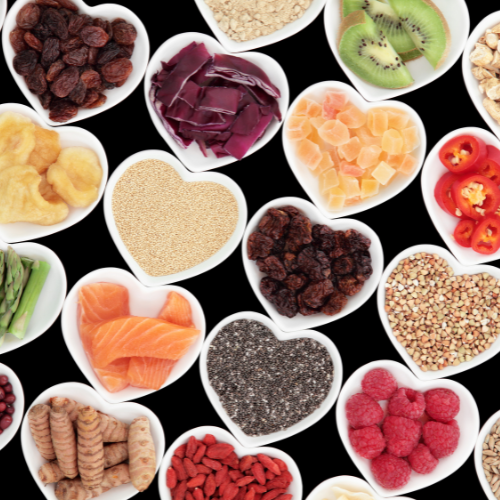5 fascinating facts about soil and the root microbiome, featuring George Monbiot

Compared to rainforests and oceans, soil often gets neglected in discussions about vital natural resources. But let’s get one thing straight: its status certainly doesn’t reflect its importance. 95% of food production relies on soil, so it’s no exaggeration to say our lives depend upon it.
Far from being lifeless “dirt”, well-managed soil can help prevent floods, increase crop yield and mitigate droughts. It also happens to be a thriving ecosystem home to a truly astonishing complexity of species. Curated from the Food Matters Live podcast, we’ve compiled 5 fascinating facts that’ll make you appreciate the beauty and importance of soil.
1. Soil is home to a quarter of the Earth’s species

Soil is a rich ecosystem containing a dizzying array of life, from single-celled microorganisms to invertebrates and small mammals.
In a square kilometre of undisturbed ground there are about several hundred thousand small animals, whilst a single tablespoon of soil contains ten billion microorganisms- more than there are humans on earth.
Researchers estimate that a quarter of the world’s organisms are soil dwellers, toiling away under our feet. Earthworms, termites, moles, nematodes, bacteria, fungi, algae- the list goes on. Speaking about soil to the Food Matters Live Podcast, the author and academic George Monbiot told us:
“It’s as diverse and abundant as a coral reef or a rainforest.”
The number and diversity of soil-dwelling organisms influence the nutritiousness of our crops, meaning its essential that we protect this biodiversity.
Check out our podcast featuring George Monbiot to learn how he became obsessed with soil and why it’s central to a sustainable food future. Alternatively, take a look at Anglo-Americans episode on the importance of biodiversity in soil ecosystems- or listen to both!
2. Fungal networks in soil allow trees to communicate with each other
At first sight, you’d be forgiven for thinking that trees are solitary organisms. But a look beneath the ground reveals a very different story. As it turns out, separate trees are interconnected by an expansive network of fungi found in soil. To give you an idea of scale, just one gram of soil contains around a kilometre of fungal filaments!
Dubbed the “Wood Wide Web”, fungal networks allow trees to exchange both nutrients and information. Sticking to the internet analogy, they are essentially fibre optic cables. When trees die, they often distribute their remaining resources to neighbouring trees via these mycological links. Likewise, diseased trees can send warning signals via these channels- all thanks to soil!
3. The soil microbiome, or rhizosphere, interfaces with plants

Soil is teeming with microscopic life, especially around the root systems of plants. Soil scientists refer to these microscopic hotspots as the rhizosphere.
Speaking to the Food Matters Live podcast, Katheryn Bartlett, a soil scientist, described them as a microbial metropolis:
“It’s the living, breathing, cultural, diverse, active part of the microbial community… it’s the London to some very small village on the outside“.
The rhizosphere performs similar functions to the human gut microbiome, existing symbiotically with plants and acting as an extension of them.
Just as in humans, bacteria help break down and share soil nutrients with the host plant. And that’s not all; they can also mobilise a microbial defence against harmful compounds.
Interestingly, plant’s can command the rhizosphere to a large extent, putting out chemical signals to attract the necessary microbial helpers. If they need specific nutrients, they’ll call bacteria specialised in producing them; and if threatened, they’ll attract bacterial bodyguards to thwart the danger.
To learn more about these fascinating systems, check out our partnered podcast with Anglo American!
4. Soil bacteria produce natural antibiotics
It’s common knowledge that numerous medicines are sourced from rainforest plants, but the soil gives it a run for it’s money as a natural pharmacy. In fact, the vast majority of antibiotics in current use are sourced from soil-dwelling microbes, as was the first and most famous antibiotic, penicillin. Let me explain.
To borrow the words of Hobbes, bacterial life is nasty, brutish, and short. Whether in the human gut or the soil beneath us, bacterial dynasties are tied in a deadly arms race were they seek to propagate themselves and undermine competition.
During this process, soil bacteria create natural antibiotics to undermine competing microbes. These organic compounds can be studied, optimised, and mass-produced for humans, although the process is costly in both money and time.
Nonetheless, researchers continue to hunt for new antibiotics in the ground beneath us. The Microbiology Society even launched an initiative inviting the public to send in soil samples. By crowdsourcing, they hoped to discover novel antibiotics that could help in the fight against antibiotic resistance.
A research team funded by the U.S. National Health Institute discovered a new class of antibiotics, called malacadins, by sifting through publicly-sourced soil samples. Commenting on the findings, the director of the National Health Institute, Francis Collins, said:
“It looks as though some of the solutions to the growing problem of antibiotic resistance have been hiding, quite literally, right in our own backyards.”
5. Only 1% of soil-dwelling microbial species have been identified

It can sometimes feel like every inch of our planet has been mapped, charted, and categorised, but when it comes to soil, researchers have barely scratched the surface. According to the Soil Association, we have only identified 1% of soil-dwelling microbial species, meaning there are myriad secrets yet to be unearthed!
Soil is one of the largest reservoirs of microbial diversity on the planet, containing innumerable species of bacteria, fungi and algae. It is hoped that future discoveries will aid breakthroughs in medicine and agriculture.















